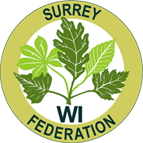Bees in Your Garden, the Zoom talk arranged by the Home Economics Committee and delivered by Michelle Ernoult, was most enjoyable and extremely informative.
Michelle, who is an excellent speaker, has an allotment and took over a beehive from an adjoining plot when the previous owner retired. She has since become completely and utterly fascinated by bees and bee keeping.
Who knew that bees were active in the dinosaur era and mainly collected nectar from ferns?
There are approximately 22,000 catalogued bees, with over 200 types of social, solitary, bumble and honey bees in the UK alone. From very early in the year bees are collecting nectar from a wide variety of flowers, and in the process pollen adheres to their legs and bodies.
Some of this pollen is taken back to the hive or the bee’s home, but some is deposited on the ovary of subsequent flowers that the bee visits. This then fertilises the flower’s “egg” and leads to the development of fruits and seeds. Hence bees are essential to the production of most foods.
Flowers have developed various strategies to attract different species of bees. Poppies, for example have to be “shaken” by the bees to get to the pollen and nectar, whilst others have developed bright colours and signals to direct the bee towards the centre of the flower.
Michelle gave suggestions of how we can help bees: build or purchase bee hotels, provide shallow dishes of water, arrange small flowered plants in clumps and provide both early and late forage.
Herbs are a particular favourite of bees and when vegetables are allowed to “bolt”, their flowers provide them with extra food and seeds for the gardener. Planted containers can be a “pit stop” for a weary bee, as can a wild flower patch in your lawn. And we should all avoid using pesticides and fungicides.
If you go to Michelle’s website, www.thelittlehoneybeecompany, you will find even more information about bees and can view the items she produces with their help.
Chris Butterfield
back to News


